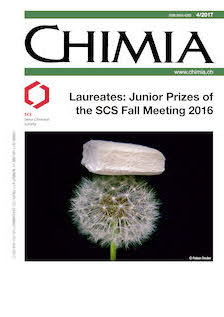Engineering Nanosized Organosilica for Molecular Recognition and Biocatalysis Applications
FH-HES Universities of Applied Sciences
DOI:
https://doi.org/10.2533/chimia.2017.243Keywords:
Molecular recognition, Nanobiocatalysts, Nanoparticles, Organosilica, Self-assemblyAbstract
A series of synthetic nanomaterials capable of molecular recognition and/or biocatalysis have been produced by exploiting the self-sorting, self-assembly and polycondensation of organosilane building blocks around protein templates. The established methodology allows for the production of thin organosilica layers of controlled thickness, down to nanometer precision. Fully synthetic virus recognition materials have been shown to specifically bind their target virus down to picomolar concentrations. The shielding of natural enzymes allowed producing nanobiocatalysts functioning under harsh operational conditions.Downloads
Published
2017-04-26
Issue
Section
Columns, Conference Reports
Categories
License
Copyright (c) 2017 Swiss Chemical Society

This work is licensed under a Creative Commons Attribution-NonCommercial 4.0 International License.
How to Cite
[1]
Chimia 2017, 71, 243, DOI: 10.2533/chimia.2017.243.







